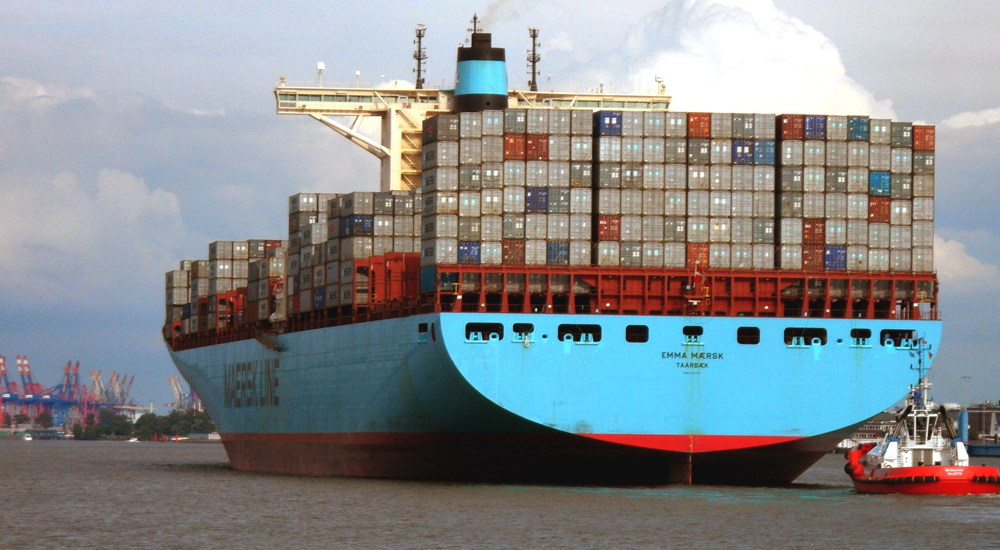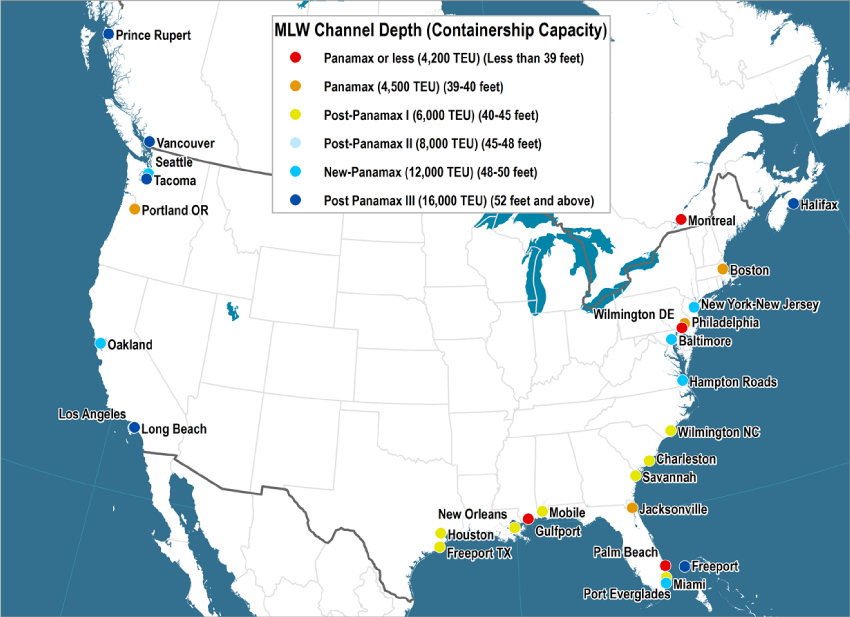Post-Panamax Ships Arrive In Virginia
No one is talking about this, but this is the future. From the Virginia Pilot’s Hampton Roads Business Journal:
The MOL Benefactor paid a $829,468 toll July 1 to pass through the nearly 50-mile long Panama Canal, The Virginian-Pilot reported, citing the Panama Canal Authority. Arriving from the Port of New York/New Jersey, the Benefactor had a quick turnaround in Norfolk before departing around midday Monday for Savannah.
At 1,105 feet long and 158 feet wide, the Benefactor has a capacity of 10,000 20-foot equivalent units or TEUs, and it is the largest container ship to call on the Port of Virginia so far. The company said it also was the first neo-Panamax-size ship to go through the Panama Canal’s expanded locks.
…and that’s why Virginia invests in Hampton Roads.
Folks may not know it, but there is a bit of an arms race going on along the eastern seaboard of the United States. Right now, New York is blasting away at its harbor. Savannah and Wilmington are dredging.
Why?
Because in the mid-Atlantic, only three ports can take the Post-Panamax container ships: Baltimore, New York, and Norfolk:
From Hofstra University:
There are channel depth limitations for accessing several East Coast ports, with many of them limited to ships around the Panamax class (4,500 TEUs) with the exception of Halifax (55 feet), Baltimore (50 feet) and Hampton Roads (50 feet) to enable these ports to accommodate Post-Panamax containerships.
There are other notable restrictions here, namely rail and transportation (roads) along the eastern seaboard that make Norfolk and the Port of Virginia extremely attractive — and in some ways, entirely unattractive.
The advantages that we have along the Chesapeake Bay is that our bays are natural — meaning that the sort of dredging that is required in places such as Miami and New York isn’t entirely necessary (thank you, Susquehanna River). Baltimore and Norfolk are safer investments, to be sure.
The problem that the Hampton Roads area faces? Balkanization.
Fifty years ago, Charlotte and Norfolk were the same size. Today, Charlotte is 20 times larger than Norfolk as a financial and economic hub.
The difference is very simple: Charlotte was able to expand regionally, while Norfolk was bottled up as city annexation took its toll on the neighboring localities during the 1960s and 1970s:
South of the James River, Norfolk was the dominant city through the 1940’s. The population of Norfolk of Norfolk grew from 144,332 to 213,513 between 1940 and 1950, but expansion of the city boundaries was opposed by its neighbors.
Rural areas surrounding Norfolk were not inclined to join into voluntary metropolitan partnerships. Rural county residents would have to contribute extra taxes for development of urban services, which would be concentrated around the growing population center of the city of Norfolk rather than benefit most residents.
. . .
Surrounding counties saw annexation by the city of Norfolk as a threat. After annexation, the counties would end up with less tax revenue to support their schools and other county services. If Norfolk succeeded in annexing commercial property, then elected officials in the counties would have to raise taxes of the remaining residents to finance existing services and to deliver on campaign promises to offer additional services.
Even now, regionalization efforts have been lopsided and clumsy, with critics decrying the imposition of a “fourth layer of government” while offering few if any benefits back to localities themselves.
Yet if the future portends to be vastly lucrative for the Commonwealth (and for Hampton Roads specifically), and the Post-Panamax containers are the golden egg, some degree of regional co-operation in tackling infrastructure must be dealt with in a direct and substantive way.
Whether the best vehicles for this co-operation are the local planning districts, some agreement between the regional localities, or an act of General Assembly remains to be seen. Despite the challenges, the benefits of embracing the “arms race” for commerce through the Port of Virginia is a tremendous opportunity, gifted by nature in two or perhaps three places in the mid-Atlantic.
The chance is ours. Baltimore and New York are certainly watching with interest.



